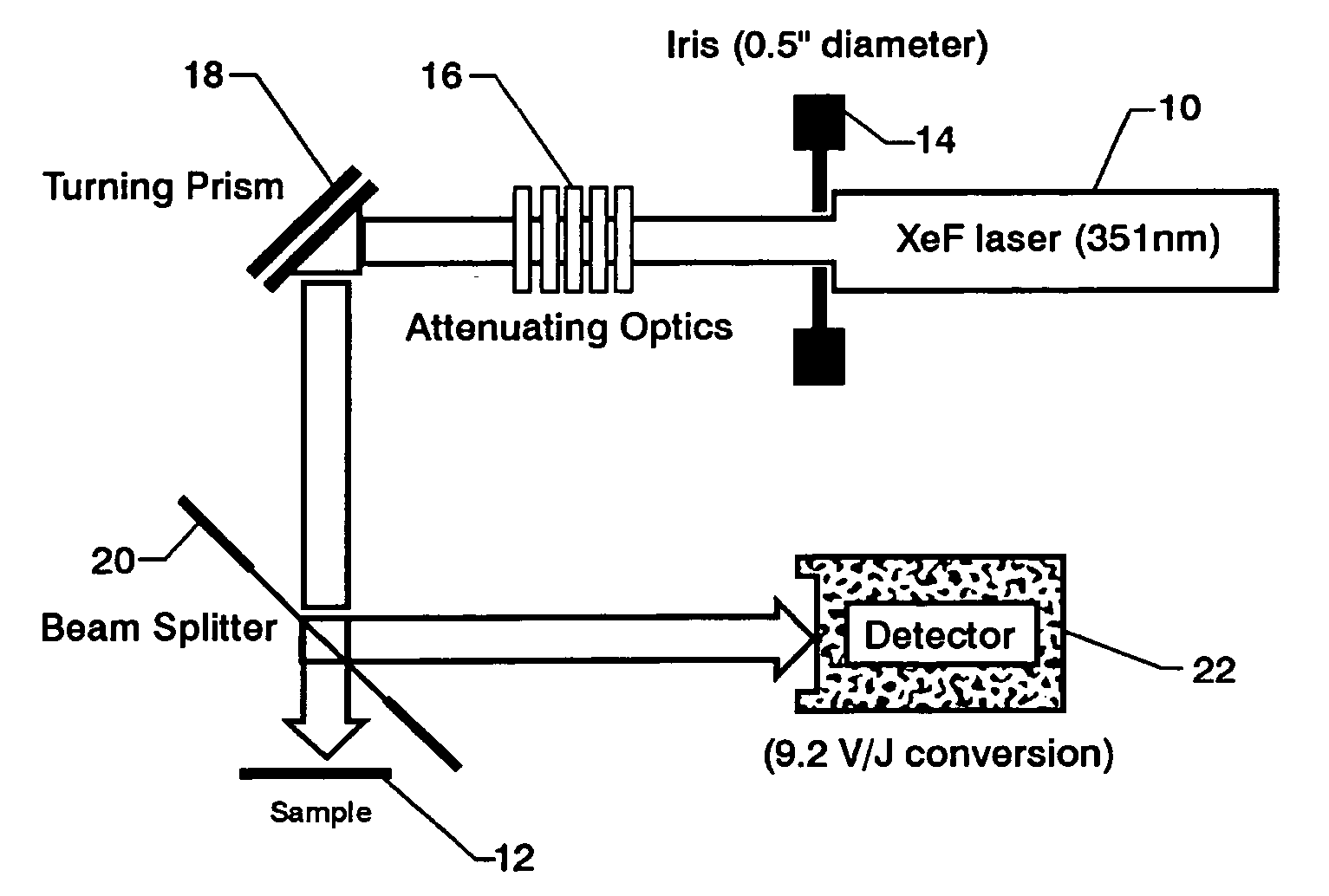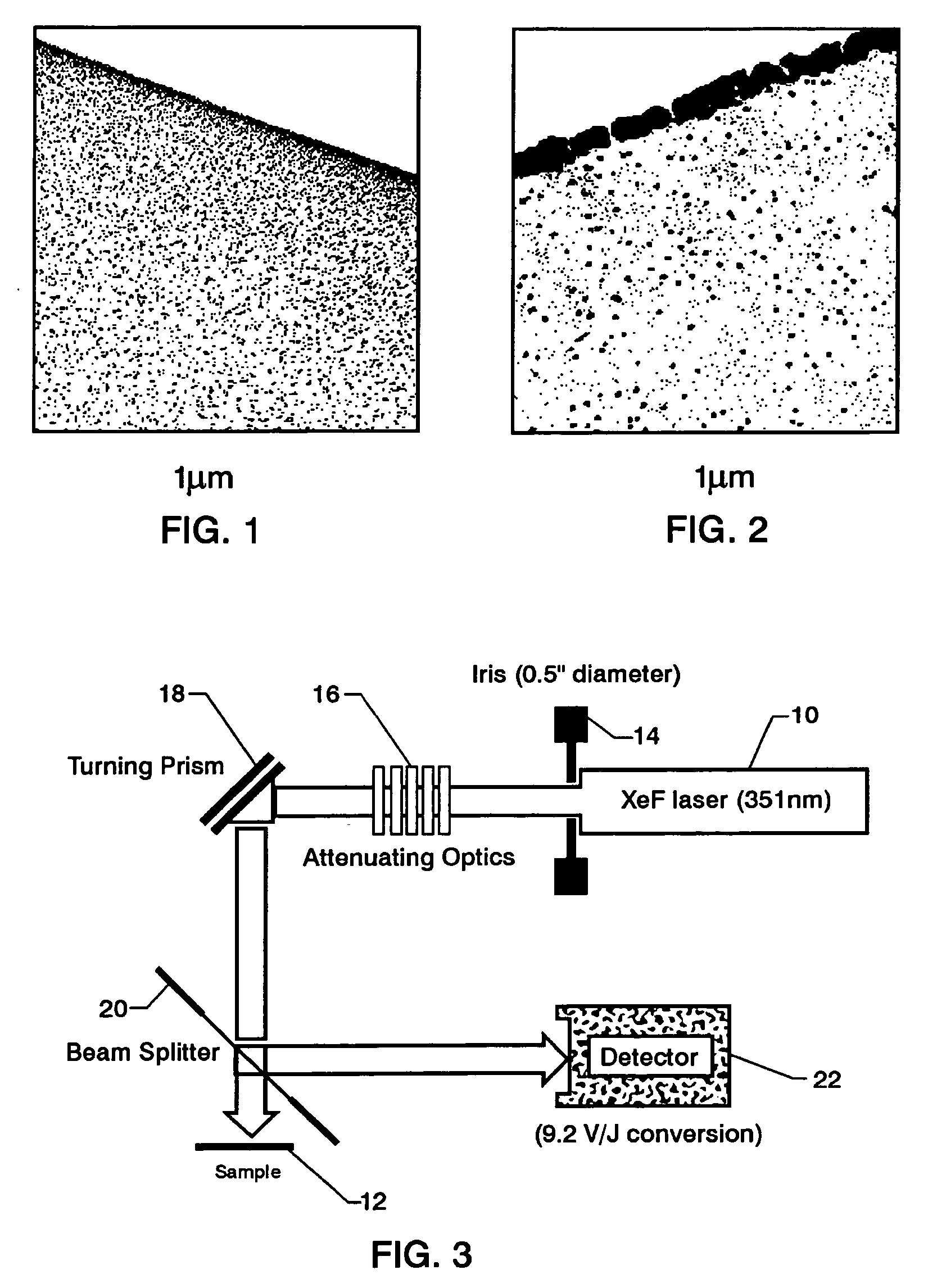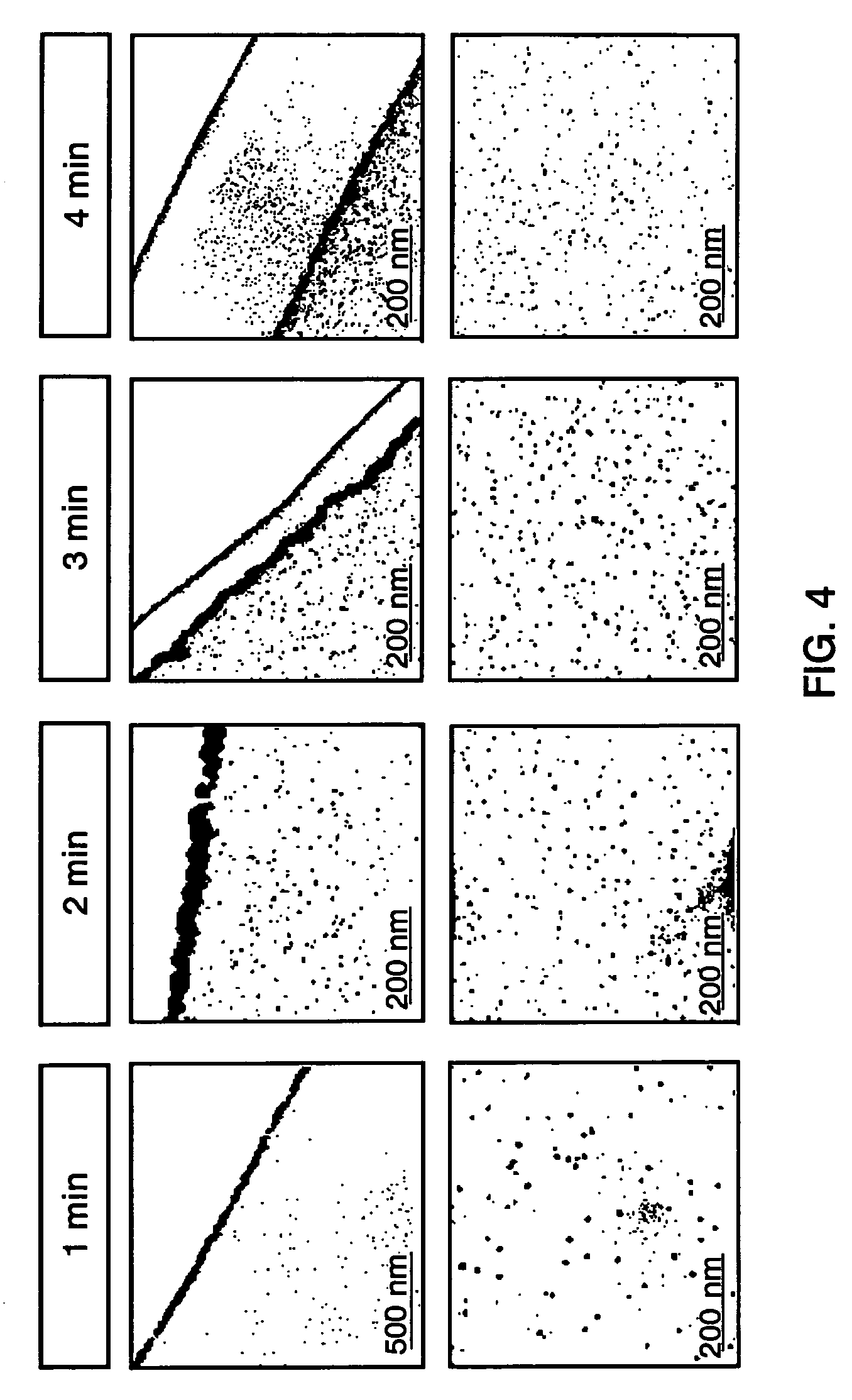Laser-induced fabrication of metallic interlayers and patterns in polyimide films
a technology of polyimide film and patterning, which is applied in the direction of resistive material coating, nuclear engineering, synthetic resin layered products, etc., can solve the problems of non-uniform size of these nanometer-size particles, typically not providing uniform size and distribution of metallic nanoparticulates, etc., and achieve precise writing and patterning. , the effect of reducing the amount of solven
- Summary
- Abstract
- Description
- Claims
- Application Information
AI Technical Summary
Benefits of technology
Problems solved by technology
Method used
Image
Examples
Embodiment Construction
[0030] The Self-Metallizing Film Technology described above relates to the production of surface metallized flexible polymer films having a tunable specular reflectivity and surface electrical conductivity. The existing technology has been found to be satisfactory for providing a one-step method for achieving metallized polymer with superior adhesion at the metal-polymer interface. However, if one were to entertain an interest in achieving mono-dispersed nanoparticulates in the bulk of the polymer, existing processes have been found by the applicant to produce density gradients of the dispersed metallic particulates and non-uniformity in the size of the dispersed nanometer-sized particles.
[0031] In an effort to achieve mono-dispersed metal particles in a dielectric polymeric matrix, the applicants entertained the possibility of photo-reduction of metal ions prior to thermal cure. This effort was initially performed in an attempt to control the resulting metallic particle size and t...
PUM
| Property | Measurement | Unit |
|---|---|---|
| wavelength | aaaaa | aaaaa |
| diameter | aaaaa | aaaaa |
| diameter | aaaaa | aaaaa |
Abstract
Description
Claims
Application Information
 Login to View More
Login to View More - R&D
- Intellectual Property
- Life Sciences
- Materials
- Tech Scout
- Unparalleled Data Quality
- Higher Quality Content
- 60% Fewer Hallucinations
Browse by: Latest US Patents, China's latest patents, Technical Efficacy Thesaurus, Application Domain, Technology Topic, Popular Technical Reports.
© 2025 PatSnap. All rights reserved.Legal|Privacy policy|Modern Slavery Act Transparency Statement|Sitemap|About US| Contact US: help@patsnap.com



